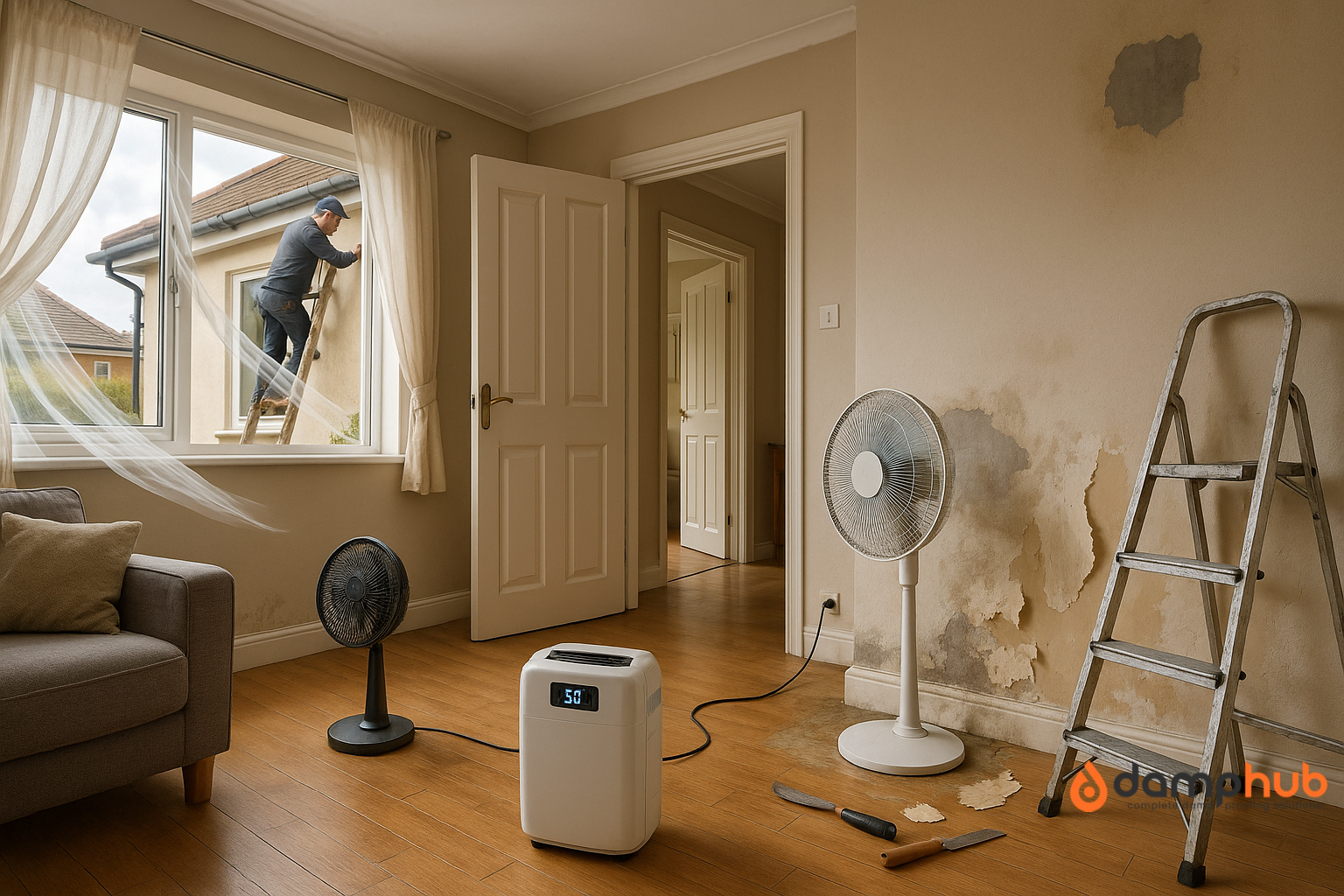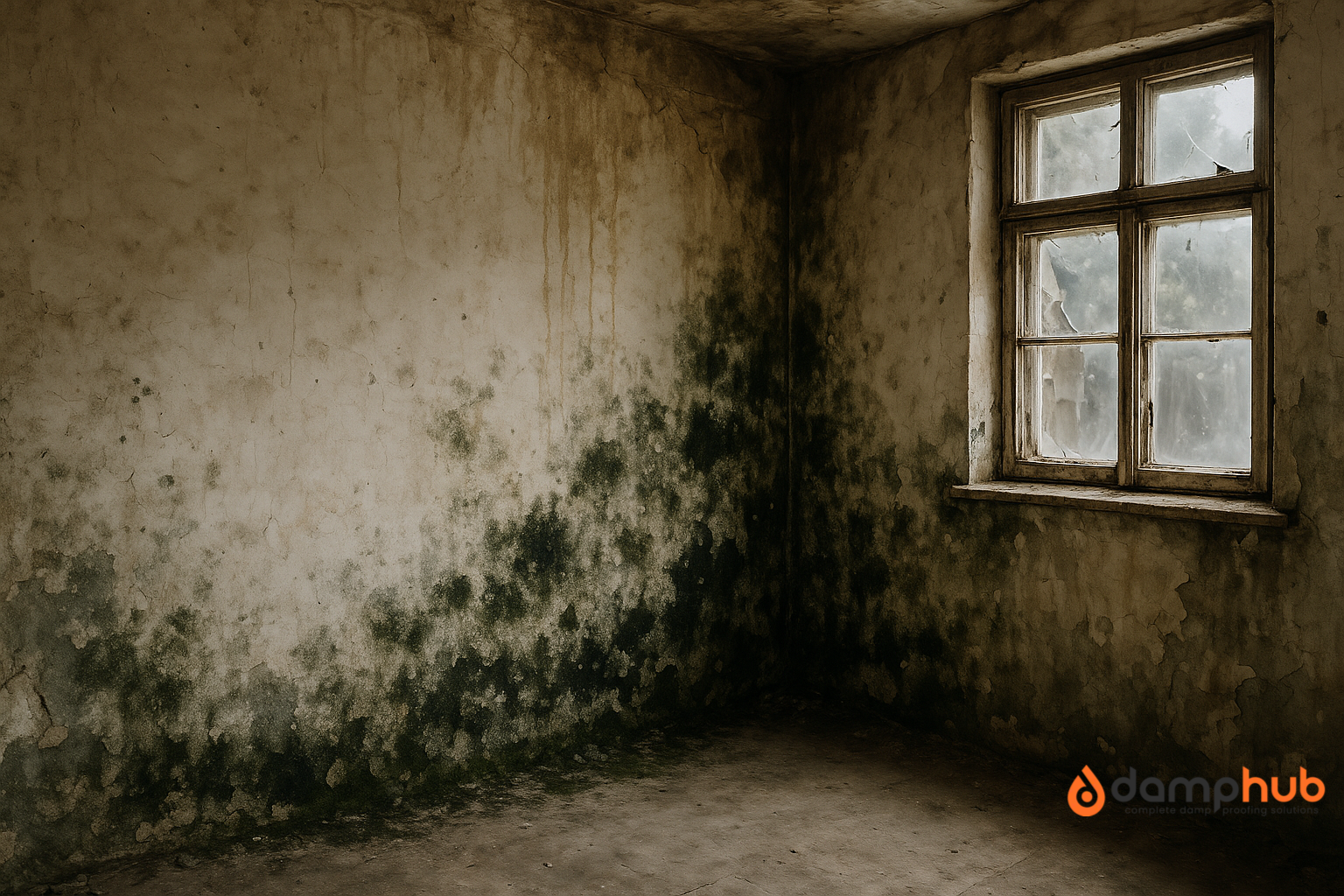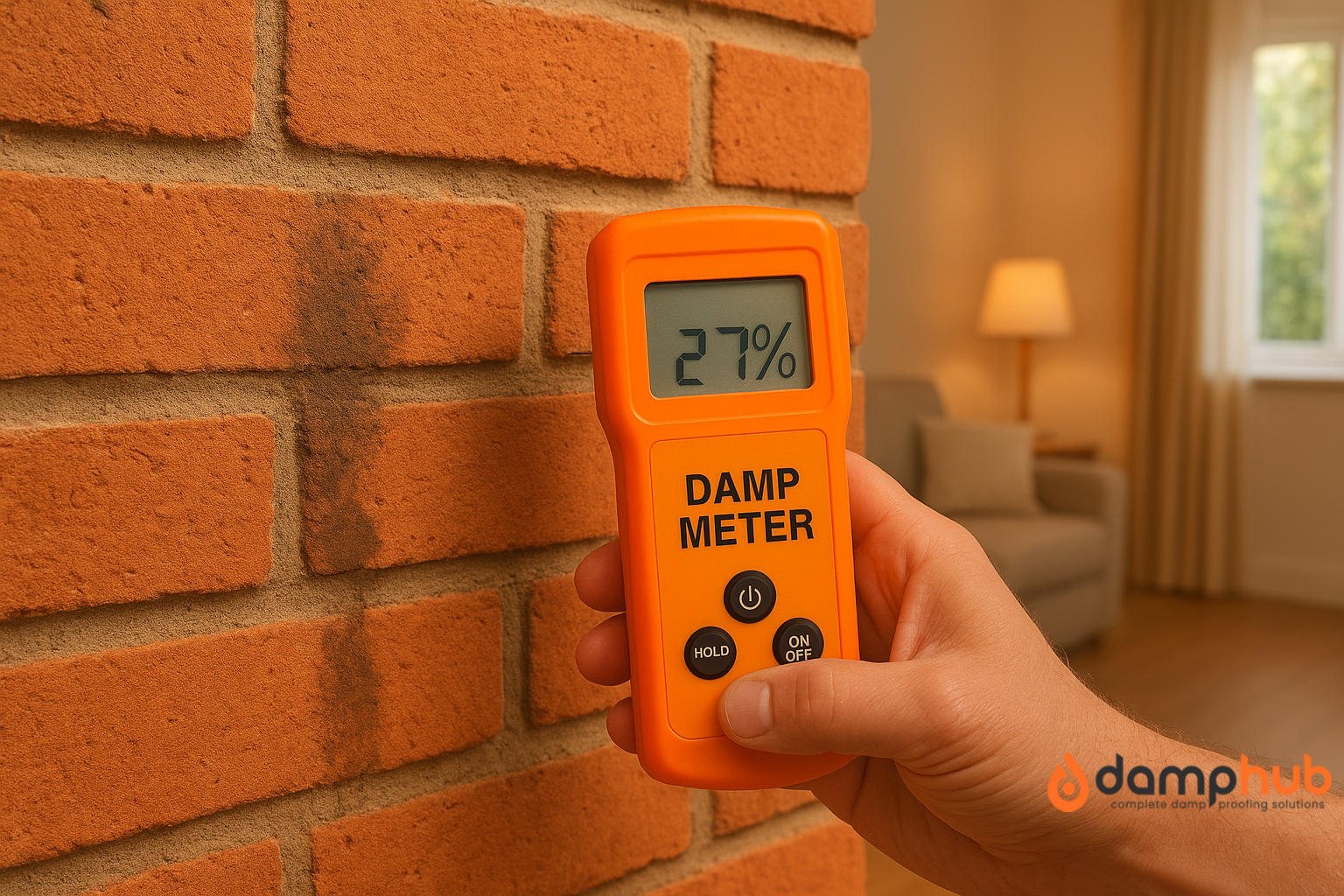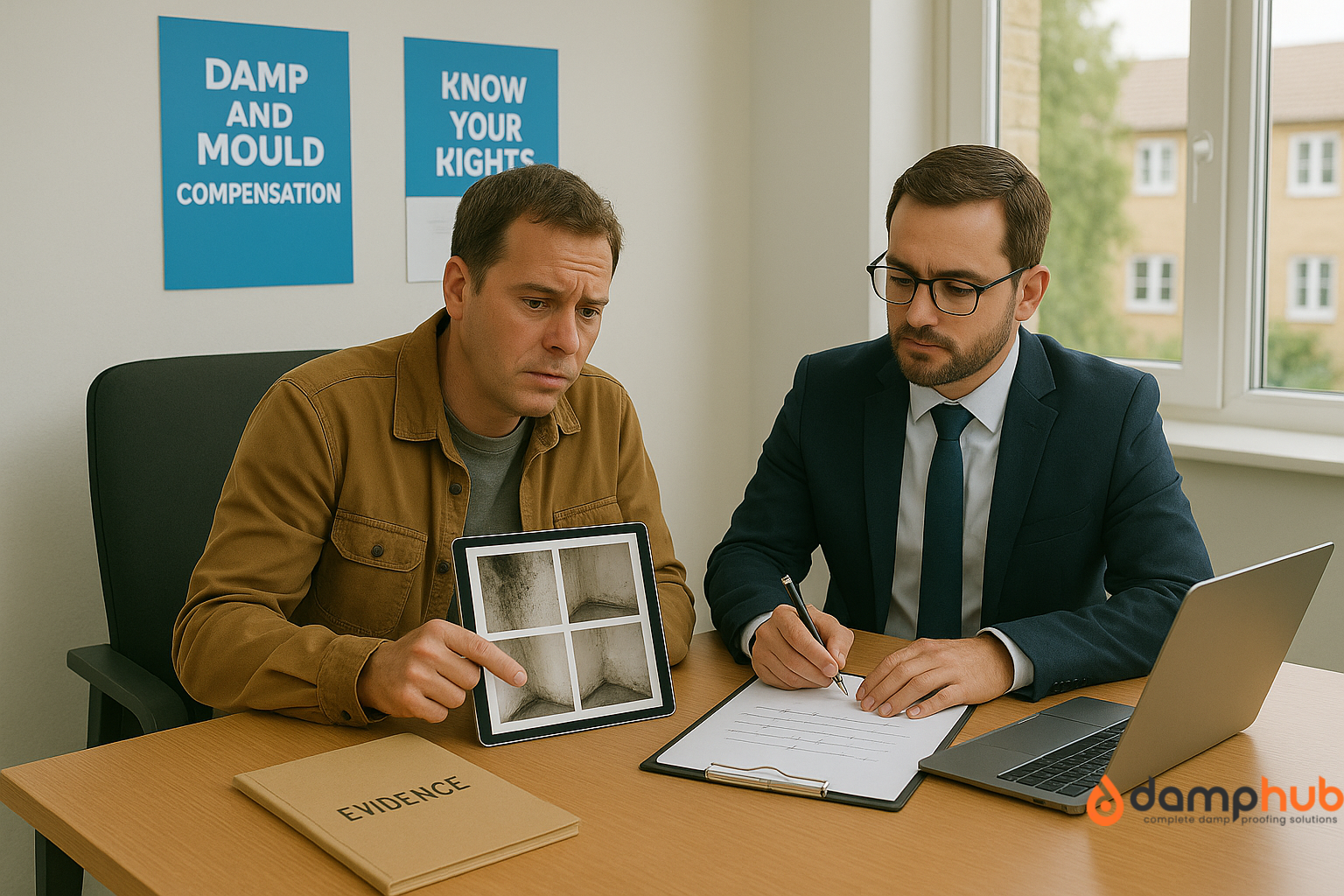
Key Takeaways
- ✓ Damp can cut 5–20% off your home’s value.
- ✓ Buyers see damp as a big red flag.
- ✓ Even small signs can stall your sale.
- ✓ Surveyors will flag it. Lenders may pause.
- ✓ Fix it early to protect your price.
How much can damp devalue your home? Damp can reduce your home’s value by 5% to 20%. That’s up to £50,000 lost on a £250,000 property. Buyers don’t see it as a small fix. They see it as a red flag.
Even minor signs like musty smells or wall stains can cause hesitation. If the issue hasn’t been checked or fixed, your home could sit unsold for months and attract lower offers.
Want to avoid that? This guide explains how damp affects your property’s value and what you can do about it before selling.
Does Damp Put Buyers Off?
Yes. Every time.
You could have polished floors, a new kitchen, and a landscaped garden. If it smells damp? Game over. Buyers walk in and immediately start looking for where it’s coming from.
One buyer told me, “I don’t do problems. If it smells wrong, I’m out.” That’s harsh. But fair.
Even small signs—peeling paint, watermarks, black spots in corners—raise doubts. And the doubts lead to questions, then lower offers, or no offers at all.
And the ripple effect? It’s real. People talk. Agents pass on concerns. Viewings dry up. A house that’s been sitting for months starts to feel like a problem child in the listings. Sometimes, the damage is reputational as much as it is structural.
Pro Tip:
You might not notice it. You’ve lived with the smell, the patch, the spot. Ask someone you trust to do a brutal walk-through. You need their honesty, not their manners.
What Types of Damp Affect Property Value the Most?
Not all damp is created equal, but none of it’s good. Here’s what typically scares off buyers fastest:
- Rising damp: The one people dread. Moisture creeping up from the ground, attacking walls and plaster. It usually means the damp-proof course has failed. And that screams expensive. Read our full guide on 👉 What is Rising Damp – A Complete Guide
- Penetrating damp: Water getting in through cracked brickwork, leaky roofs, or failed pointing. It spreads fast and often hides behind furniture or inside walls.
- Condensation: The most common—and sometimes easiest to fix. Caused by poor airflow. But when it leads to black mould, it still sets off alarm bells.
It’s also worth noting: some buyers might accept condensation in a bathroom, especially if there’s no window or the fan’s busted. But rising damp in a lounge or black mould in a bedroom? That’s when they start backing away. Fast.
Buyers often can’t tell which is which. They just know “it’s damp” and panic accordingly.
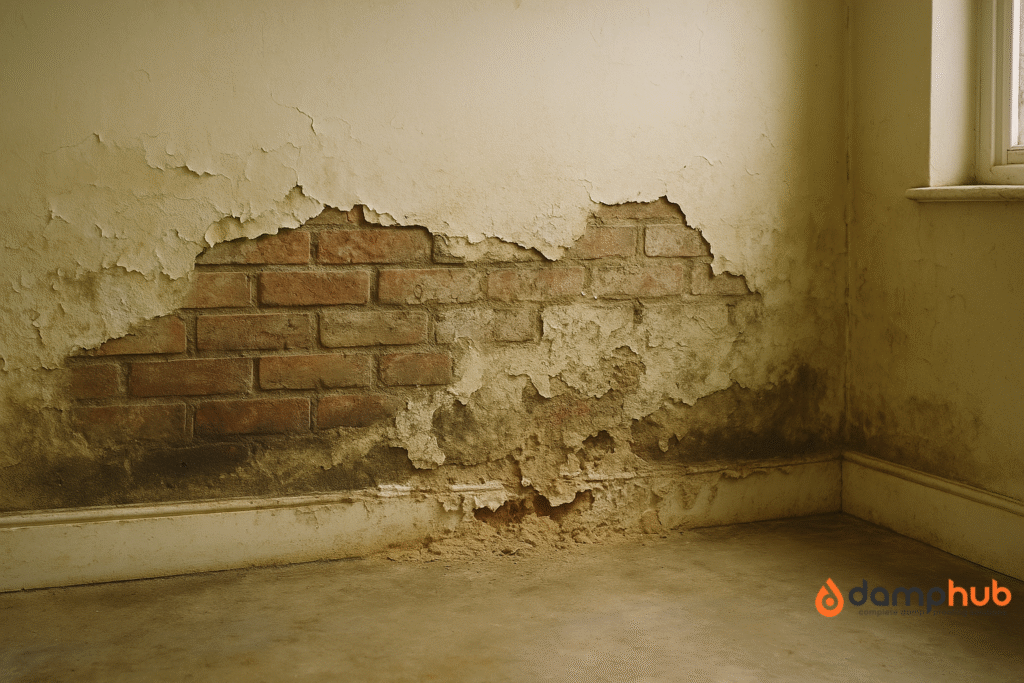
How Do Buyers and Surveyors React to Damp?
Buyers? Emotionally. They sniff the air, glance at the ceiling, tap a wall, and if anything feels wrong, they get nervous.
Surveyors? They’re clinical. Moisture meters, thermal cameras, salt tests. They record the numbers and flag anything out of range. If it goes in the report, it’s a mark against your property. Lenders might ask for further inspection, or even withhold funds until it’s resolved.
And the worst part? Even if you sorted it last year, and the issue’s fixed, a historic stain can still trigger a reaction. Because buyers don’t know what’s old and what’s active.
Sometimes it’s not even visible. A slightly soft wall or a faint cold patch is enough to raise eyebrows. A vague note in the survey like “possible signs of moisture ingress,” is all a buyer needs to ask for £10,000 off.
Good to Know:
A clean follow-up report helps. If you fixed it, show the receipts and results. Otherwise, they’ll assume it’s still a live issue.
How Much Does It Cost to Fix Damp Problems?
It’s hard to pin down a number without seeing it, but here’s what you might expect:
- Condensation: £50–£200. A dehumidifier, a vent, maybe a fan in the bathroom.
- Penetrating damp: £300–£1,500 depending on what’s failing—walls, gutters, roof.
- Rising damp: £1,000–£5,000+. You might need walls stripped, injected, replastered, or repainted. Maybe even flooring.
And that’s before we talk about the mess. Dust, noise, drying time, and repainting. It’s not just money—it’s disruption.
Also, keep in mind: if you don’t catch it early, what could have been a £300 job might snowball into a full-blown renovation. Once plaster starts crumbling or floors begin lifting, the bills stack up fast.
Pro Tip:
Fix the source, not the symptoms. Too many sellers paint over a problem and hope no one notices. They always notice.
👉 Must read: How to Hire an Independent Damp Specialist in London
Can You Sell a House With Damp?
You can. But not easily. And not quietly.
You have to disclose it. UK law says so. If you knowingly hide a problem, and the buyer finds it post-sale, you could end up in court. And trust me, they will find it.
Your options:
- Fix it upfront. Pay for the work, keep the receipts, and show buyers you dealt with it.
- Be transparent. Lower your price, disclose the problem, and let the buyer handle it.
- Split the cost. Offer to cover part of the repairs as part of the negotiation.
Covering it up is the worst option. It breaks trust, and trust is the one thing that gets deals done.
And once trust is broken, everything gets harder. Buyers push harder. Agents get wary. Your sale gets slower.

Is It Worth Fixing Damp Before Selling?
Most of the time, yes. Especially if the fix is manageable. Spending £2,000 might keep your full asking price intact. Or help you sell faster. Or both.
Some buyers won’t even view a property if the listing hints at damp. Fixing it turns a red flag into a non-issue.
But if the fix is huge, and your buyer is an investor? Maybe it makes sense to discount instead. It depends on who you’re selling to.
Also consider timing. If you’re selling in winter, when condensation is worse and homes stay closed up more, that’s when signs are most obvious. A spring sale with the windows open and everything fresh? That’s your best shot.
Good to Know:
If you do fix it, get it documented. A post-repair survey is your friend.
👉 Must read: What is included in Damp Survey?
How to Prevent Damp From Lowering Your Property Value
The best damp strategy? Don’t let it happen in the first place.
Simple habits save you from expensive problems:
- Open windows regularly
- Use extractor fans when cooking or showering
- Don’t dry laundry indoors without ventilation
- Check and clear gutters at least twice a year
- Fix leaks—fast. Even a small drip adds up.
It also helps to inspect the loft occasionally, check external brickwork, and reseal windows or sills when needed. Prevention often costs under £100. Repairs? That’s a different story.
If you’re selling, walk your property like a buyer would. Check corners, ceilings, and window frames. Be brutally honest.
Pro Tip:
A £20 digital humidity meter can help you spot problems early. If the reading’s always over 60%, you’ve got a moisture issue.
👉 Must read: How Long Does a Damp Survey Take? A Step-by-Step Timeline
Does Damp Affect Home Insurance or Mortgage Approval?
Yes. Damp might not ruin your chances, but it complicates them.
Lenders can delay or reduce your mortgage offer until repairs are made. Some insurers won’t cover damp-related damage if they think it was due to neglect or poor maintenance.
It’s also harder to get building insurance for homes with unresolved damp. Some policies might include damp cover, but only if you can prove it was sudden, not ongoing.
And if it gets worse while you’re insured? You might still be out of luck. Many policies don’t cover long-term issues.
Good to Know:
If you’ve already fixed the issue, some insurers will note it and move on. Keep proof handy.
What Happens If You Discover Damp After the Valuation?
That’s when things get tricky. A surveyor spots something. The buyer panics. Suddenly:
- The price drops
- The mortgage lender wants another look
- The whole deal stalls or collapses
You’re left scrambling. Repairs take time. Confidence gets lost.
In a competitive market, that delay might not hurt. But if buyers are thin on the ground, you could miss your window.
Best move? Get a damp survey before you list. Deal with it early, not during negotiations.

How Much Can Damp Devalue Your Home? Real Numbers You Should Know
Let’s run the numbers.
A house valued at £250,000 could drop to £212,500 with a 15% cut for untreated damp. That’s £37,500 lost because of a leak no one bothered to look into.
If your home has multiple issues—say, rising damp downstairs and mould upstairs—you could lose even more.
And it’s not just the value. It’s the delay. Properties with visible damp take longer to sell. Time is money, too.
In some cases, a house sits for months because of buyer hesitation. Eventually, it develops a reputation. You find yourself reducing the price, not because of market forces, but because you didn’t deal with the one issue that scared everyone off.
Still wondering how much can damp devalue your home? It could be thousands—even tens of thousands—especially if left untreated. If you’re prepping to sell, that’s the last thing you want.

👉 Must read: How Much Does Damp Proofing Cost?
Final Thought: How Much Can Damp Devalue Your Home? It’s Not Just About Money
Buyers want to believe in your home. They want to walk in and feel safe, warm, and clean. Damp gets in the way of that. Literally and emotionally.
So if there’s something off—a smell, a stain, a patch of discolouration—deal with it. Don’t wait for a buyer to point it out. They won’t just notice. They’ll notice, flinch, and walk.
Fix it, document it, and be upfront. The best sales come from honesty.
When your home feel dry, solid, and taken care it’s when people compete for it. Not run from it.
Quick Recaps
- ✓ Fix damp before it hits your property value.
- ✓ Get a survey and document the repairs.
- ✓ Clear signs of damp before listing your home.
- ✓ Seal leaks, air out rooms, and tackle mould now.
- ✓ Show buyers a dry, well-maintained home.
How Much Can Damp Devalue Your Home? Common Questions Answered
How much damp is acceptable?
A moisture level below 15% in walls is generally considered safe. Between 16%–20% may be borderline, especially in older homes.
Anything over 20% usually signals a problem, especially if you see stains or mould.
It’s not just about the number—it’s about what else you see and smell. Read our full guide What Percentage Damp Is Acceptable In Walls?
What is considered very damp?
If a wall shows moisture levels above 25%, it’s considered very damp.
At that point, you might start seeing damage—peeling paint, mould, even soft or crumbly plaster.
That’s when surveyors raise red flags, and repairs often become urgent.
What percentage of houses in the UK have damp?
Around 4% to 27% homes in the UK have some form of damp according to government sources. It’s especially common in older properties without modern damp-proofing.
Flats and rental homes see it more often due to poor ventilation or neglected maintenance.
How do you know if damp is serious?
If damp is causing mould, visible wall damage, strong smells, or cold patches, it’s serious. Soft walls or recurring condensation can also point to hidden issues.
The moment it starts affecting your health or property structure, it’s no longer a “wait and see” situation—it needs attention.
How much compensation for damp and mould in the UK?
Tenants may be entitled to £1,000 to £10,000+, depending on the severity, how long it was ignored, and the impact on health or belongings.
Each case is different. Courts look at proof—photos, medical reports, and whether the landlord was informed. Please, see our full guide How much Compensation is There for Damp and Mould in the UK
What is the damp law in the UK?
Landlords are legally required to keep homes free from serious damp and mould under the Housing Health and Safety Rating System (HHSRS).
If it’s affecting your health or safety, it’s a Category 1 hazard—and landlords must act.
Since 2023, damp and mould have been taken more seriously under new housing guidance following tragic health cases.
How much is a damp survey?
Expect to pay £150 to £500, depending on your property size and location.
A basic inspection for a flat might be on the lower end, while full surveys for larger homes—especially with rising damp—can cost more.
Always ask if it’s an independent surveyor (not trying to sell you treatment). Read our full guide, How Do I Choose a Damp Surveyor?


